Brewing Guide: How to Prepare Coffee in a French Press?
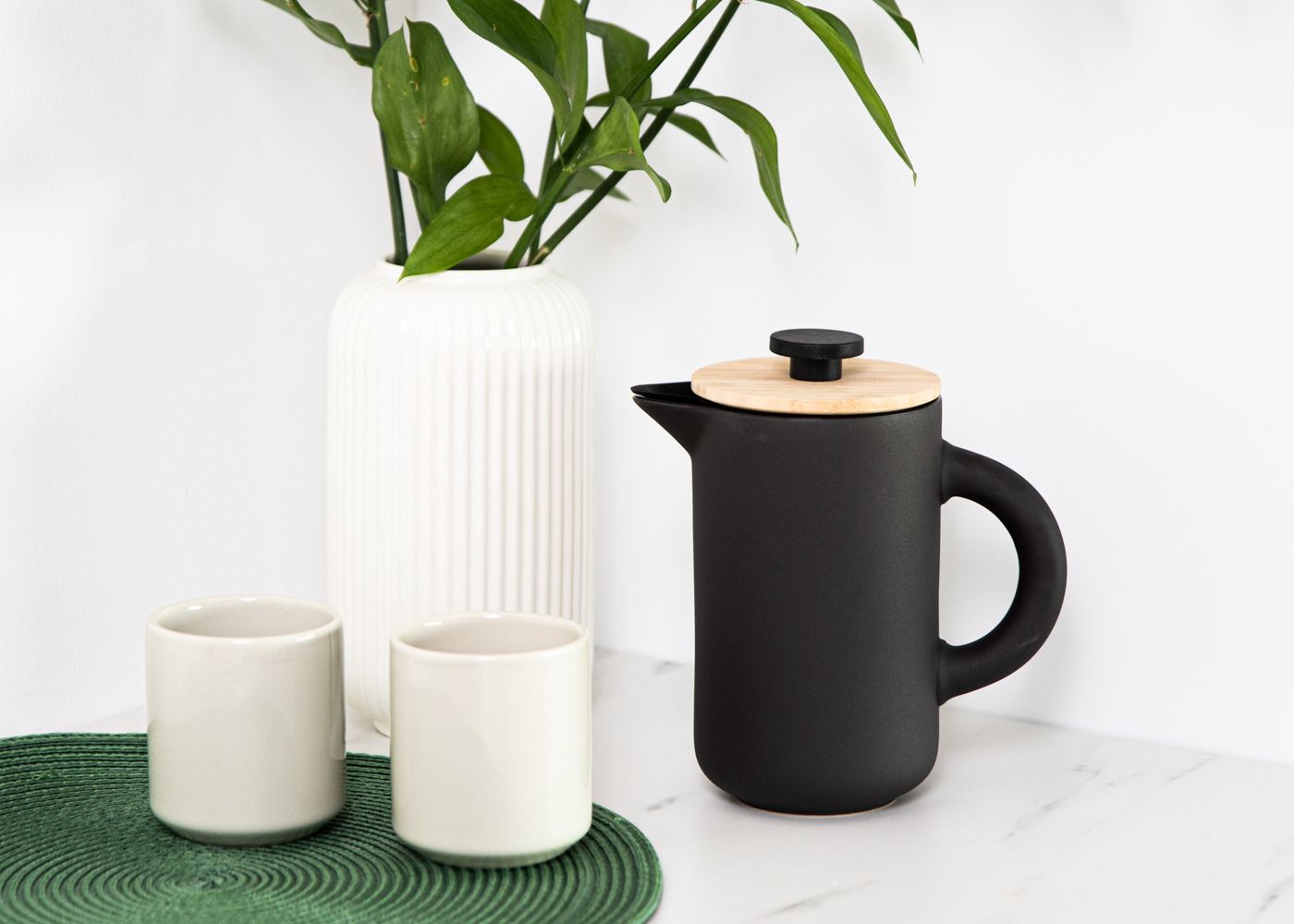
One of the most straightforward coffee brewing tools out there, the French press has many other names too: press pot, coffee press, cafetière, cafetière à piston… While you may have heard of some of these, the first one’s still the most likely to be encountered. Don’t be fooled by its name though: yes, this coffee maker is called “French”, but instead of being popular in France only, it’s actually used and loved all over the world. A French press coffee can be brewed quickly and easily, which allows you to experiment with a variety of aromas and flavours. A Cafetiere is affordable and doesn’t require much maintenance—which is why it can be found in thousands of modern kitchens.
French presses have earned the title of the most universal brewing tools too. You can use your French press to brew some steaming hot coffee, prepare a delicious cold brew, infuse some tea or even whip up some milk foam. With this post, we’re inviting you on a magical journey that will, hopefully, help you rediscover the legendary cafetière. There’ll be some yummy recipes and useful brewing tips along the way too, of course!
Why Is It Called a French Press?
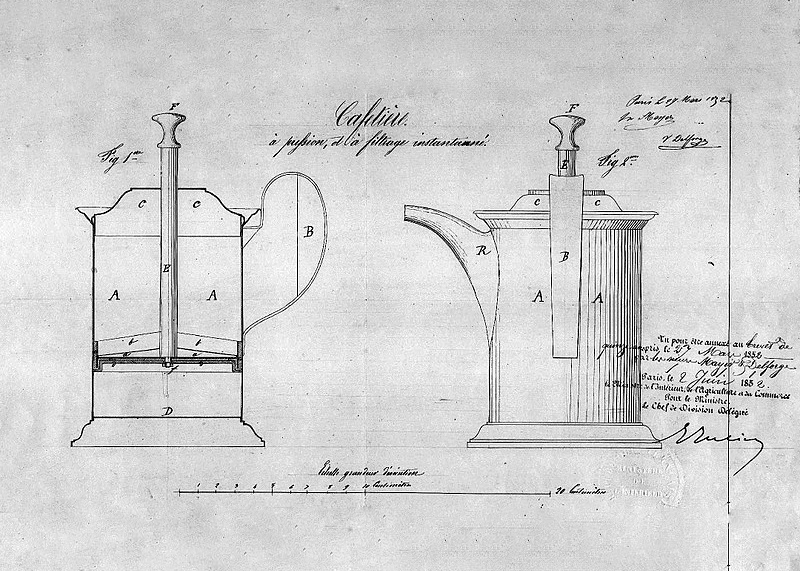
The story of the French press is long and pretty convoluted. The authorship of this coffee maker as it’s known to us today is normally attributed to Attilio Calimani, an Italian designer who patented the device in 1929. Where there’s coffee, there’s Italians, right? They invented the moka pot and the espresso machine too, after all…
Well, that isn’t exactly true this time around. The unofficial version of the story states that the coffee maker’s principle of operation was, in fact, developed by a French coffee lover. The anonymous hero accidentally discovered that infusing ground coffee with hot water and then pressing the grounds down with a piece of cloth actually resulted in a drink that tended to be far tastier than the one brewed in a kettle. The first people to patent a prototype of the modern coffee press were also French: it was done by Henri-Otto Mayer and Jacques-Victor Delfroge in 1852.
Even though the device underwent numerous changes over the second half of the 20th century—be they initiated by the Swiss, who developed the famous Chambord model, or by the Danish kitchenware manufacturers at Bodum, who helped the whole world get acquainted with the convenience of a French press—it still can’t be disputed that the French were the first to discover this coffee brewing method. So, the answer to the titular question of this section is quite simple indeed: the name of a French press originates from the fact that it was invented by the French. Vive la France!
Why Are French Presses So Popular?
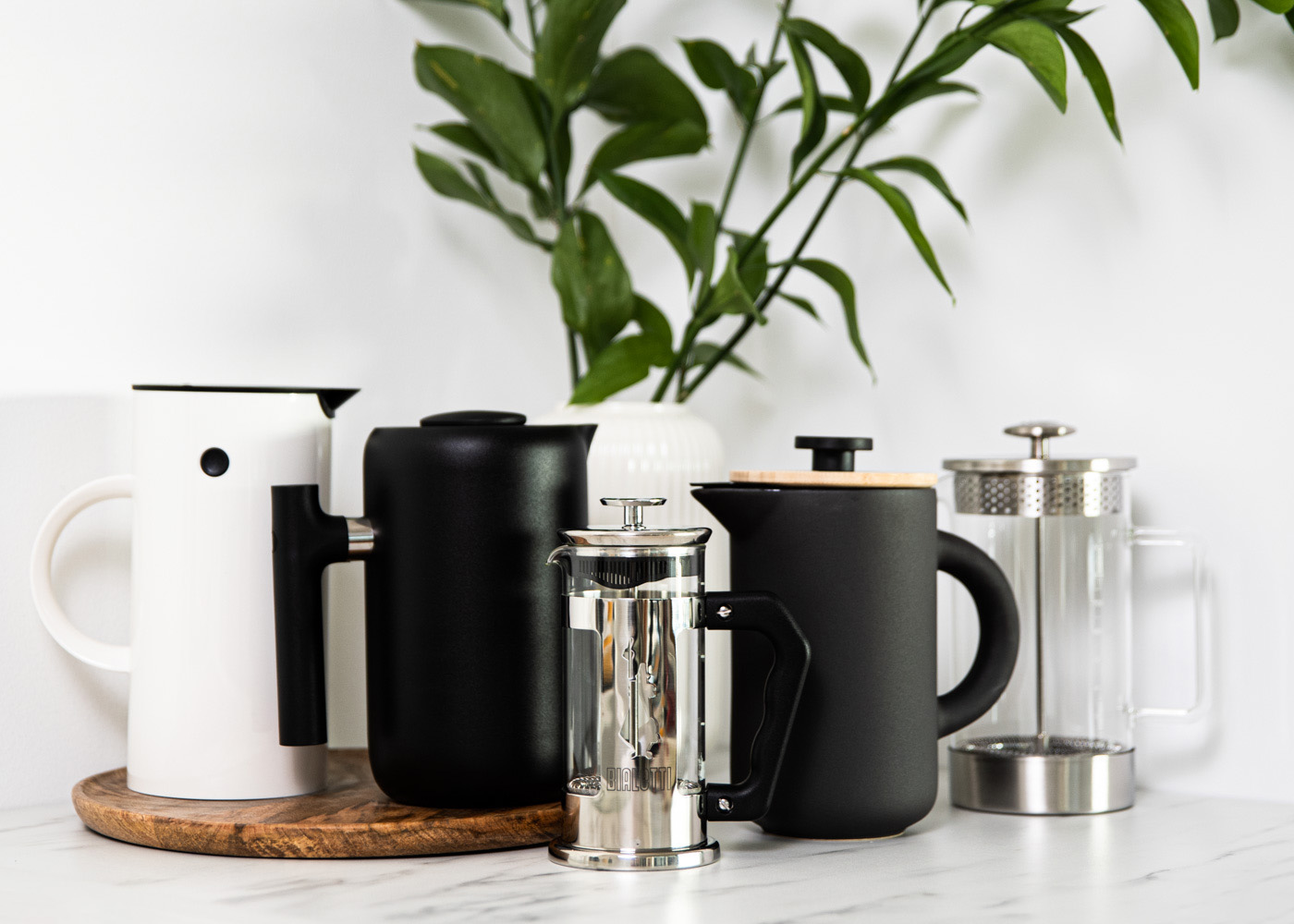
French presses can be found in thousands of kitchens nowadays. Let’s explore the reasons behind their remarkable popularity:
Natural coffee flavours. Coffee brewed in a French press is thick, oily, characterised by vivid flavours and a full body. If you want to unveil the natural taste of your coffee, you’re highly unlikely to find a brewing tool that could rival the French press: when prepared in this coffee maker, every aroma and flavour of your brew gets uncovered. That’s why French presses are valued not only by regular coffee drinkers, but by true experts of the coffee world too: the latter often use a French press when tasting different coffees.
Freedom to experiment. With a French press, you’re always in the driver’s seat. It’s no secret that coffee taste is influenced by numerous different elements: these include water quality, the coffee beans you end up choosing, the grind level of your ground coffee, the coffee-to-water ratio, the technique you employ when pouring water over your coffee, the way in which you push the plunger down… Luckily, a French press lets you take full control of all of the above, so you can go ahead and experiment!
Ease of use. Can brewing get more straightforward than this? There are no complicated designs to try and figure out: all you’re presented with is a cylindrical carafe, a lid and a built-in filter attached to a plunger. Simply add coffee, pour water over it, wait for a few minutes, push down the plunger and enjoy!
Affordable price. A French press is one of the cheapest brewing tools out there. You can get an excellent one for as little as a dozen euros or so!
Simple maintenance. There aren’t a lot of components to a coffee maker like this, so it’s extremely easy to wash and clean. Simply rinse the carafe and wash the filter.
Compact size. If you’ve just purchased a bean-to-cup or an espresso machine, it’ll probably take you some time to decide on the best spot to place it. Not so with a French press: you won’t have any trouble finding enough space for it in your kitchen cupboard. You can easily take it with you when going on a trip too. Keep in mind though that French presses do come in different sizes and can hold anywhere from a few hundred millilitres to one litre of coffee, so choose the capacity that’s best suited to your needs.
Universality. French presses are particularly universal: they can be used to brew regular coffee, make cold brew drinks, infuse tea or even froth milk foam. To learn more about each of these uses, read on!
Brewing Guide: How to Prepare Delicious Coffee in a French Press?
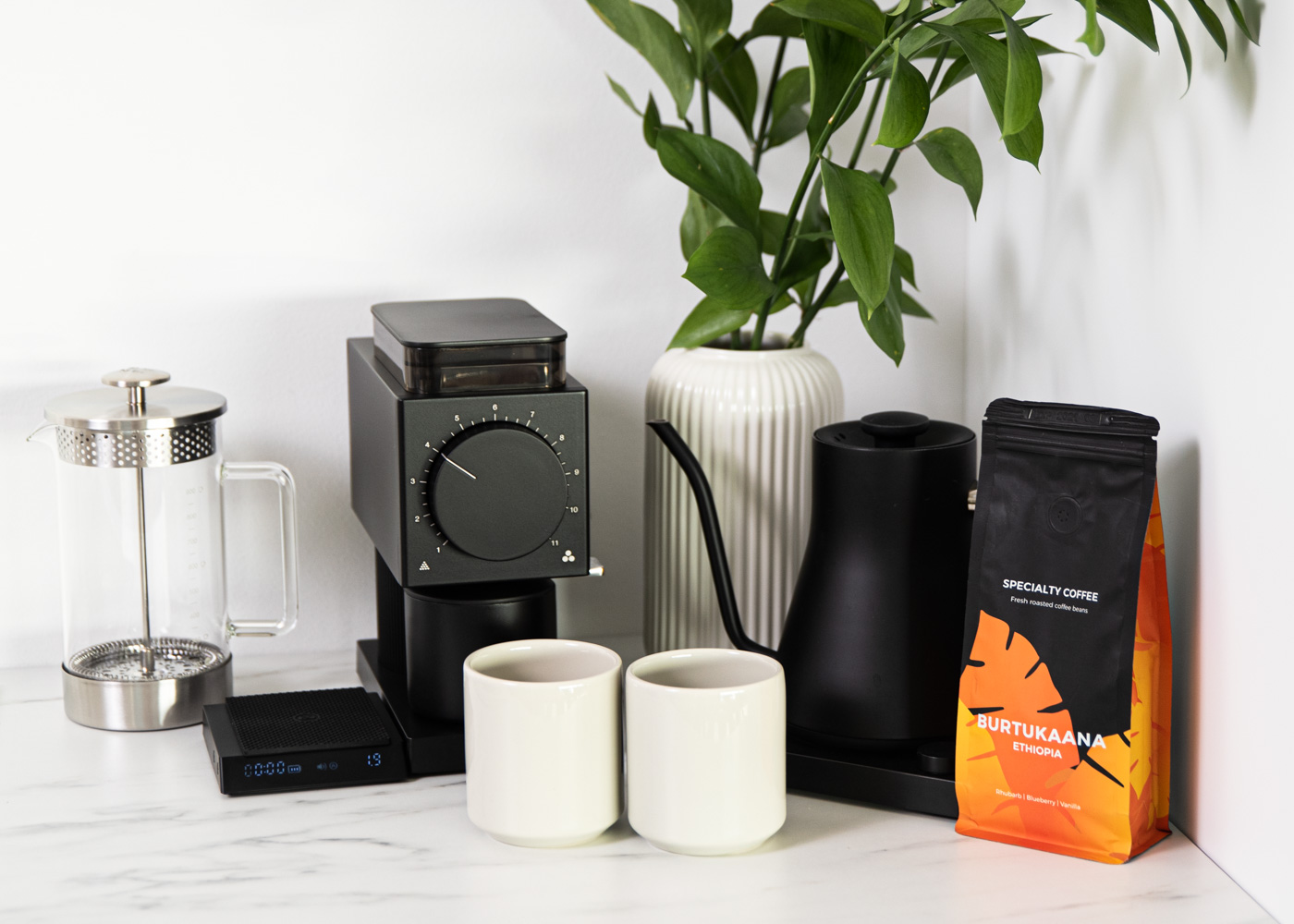
While French presses are notoriously easy to use, there are still a few nuances to keep in mind if you want to make your brew even more fragrant and delicious.
Getting Ready: What Will You Need?
Freshly roasted high-quality coffee beans. We’ve already learned that French presses are excellent at unveiling the natural flavours of your coffee. While this will make yummy drinks taste even more delicious, coffee of a poor quality will surely reveal all of its drawbacks too. Your best bet is going for freshly roasted premium specialty coffee. With its striking depth and complexity of flavours, such coffee is simply made to be brewed in a French press.
Digital scales. Whichever brewing tool you end up choosing, you’ll find two aspects to be particularly important: these are none other than coffee-to-water ratio and brewing duration. Digital scales are guaranteed to come in handy when weighing coffee and tracking time, so you should definitely consider adding them to your brewing arsenal.
Coffee grinder. To make your drink as fragrant and delicious as possible, freshly ground coffee is an absolute must. It’s no surprise then that coffee grinders play such a key role in the brewing game. If you’re still in the process of choosing a grinder that’s just right for you, this post may help you out. When brewing coffee in a French press, go for a medium or coarser grind (depending on your preferred brewing technique).
Kettle and water. The key rule here is this: make sure that your water tastes delicious. It must be fresh, filtered and soft. You can even try using spring water and see how you like it. As far as temperature is concerned, simply heat water until it starts boiling. As you take your kettle off the heat and get ready to fill your coffee press with water, it’ll naturally cool down a bit, reaching the ideal brewing temperature. Regular kettles work well enough here, but to obtain better results, you can give special pour-over kettles a try. They’re equipped with thin spouts that instantly improve your pour.
French press. Choose a French press that works best for you: it can be produced by any manufacturer, made of any material and capable of holding any amount of coffee.
Cups. A beautiful cup makes a delicious drink even tastier! In terms of capacity, black coffee cups would work best here.
Classic Brewing Method
To brew delicious coffee quickly and easily, follow these steps:
Weigh your coffee beans. The right coffee to water ratio is crucial for a great brew. We recommend aiming for the classic proportion of 70 grams of coffee per 1 litre of water. If your French press is on the smaller side, adjust these numbers accordingly: for example, use 35 grams of coffee if your press holds 500 ml of liquid.
Grind the beans coarsely. The coarser the grind, the less bitter the resulting drink. A coarse grind will also prevent fine coffee particles from finding their way into your brew.
Pour ground coffee into your French press and slowly add one third of water.
Let it rest for a minute. The so-called “blooming” phase is taking place at this time: gas hidden in the coffee is released and aroma is developed.
Stir, then slowly add the remaining water.
Wait for three minutes, then stir again.
Push the plunger down slowly. The longer the contact between coffee and water, the more bitter and intense the resulting drink. If you prefer your coffee extra strong, let the brew rest for a bit longer before pushing the plunger down.
Pour into cups and enjoy!
Tips from James Hoffmann, a True Coffee Guru
James Hoffmann, a world-famous coffee expert, is always engaged in experiments that help him develop useful tips as to how you can make your coffee even more delicious. The French press technique suggested by Hoffmann is a bit more complicated and does take longer than its traditional counterpart, yet it also results in a “cleaner” brew with close to no coffee sediment in it (as you’ll probably come to find out, this is no mean feat!). This is how James Hoffmann does it:
-
- Ground some freshly roasted coffee beans (aim for a medium grind). The recommended ratio is 60–70 grams of coffee per 1 litre of water. Pour the ground coffee into your French press.
- Get your water boiling and pour it all in at once.
- Let it rest for 4 minutes.
- Use a spoon to break the crust that has covered your coffee, then stir. Most of the sediment will sink down to the bottom, but some particles might be left floating on the surface. Use two spoons to fish them out, then throw them in the sink.
- Wait for another 5–8 minutes. Any leftover sediment will sink down to the bottom too during this time, while the flavour of your brew will keep on getting better with each passing minute. Don’t worry, your coffee’s still too hot for you to sip at this time anyway!
- Put on the plunger, then push it down slightly until it comes into contact with the liquid. Make sure not to push it all the way down—you’ll stir up the sediment if you do.
- Pour into cups gently.
How to Make Cold Brew Coffee in a French Press?
Cold brew coffee is the latest brewing trend, and its popularity should come as no surprise. Brewed in this manner, your drink lets go of some of its acidity and bitterness, replacing them with pleasant sweetness and remarkable depth of flavour. It’s particularly tasty when paired with some ice cubes on a hot summer’s day, poured onto vanilla ice cream or used as one of the ingredients in a refreshing cocktail. While there are special cold brew coffee makers available on the market, you can just as well brew some using your French press.
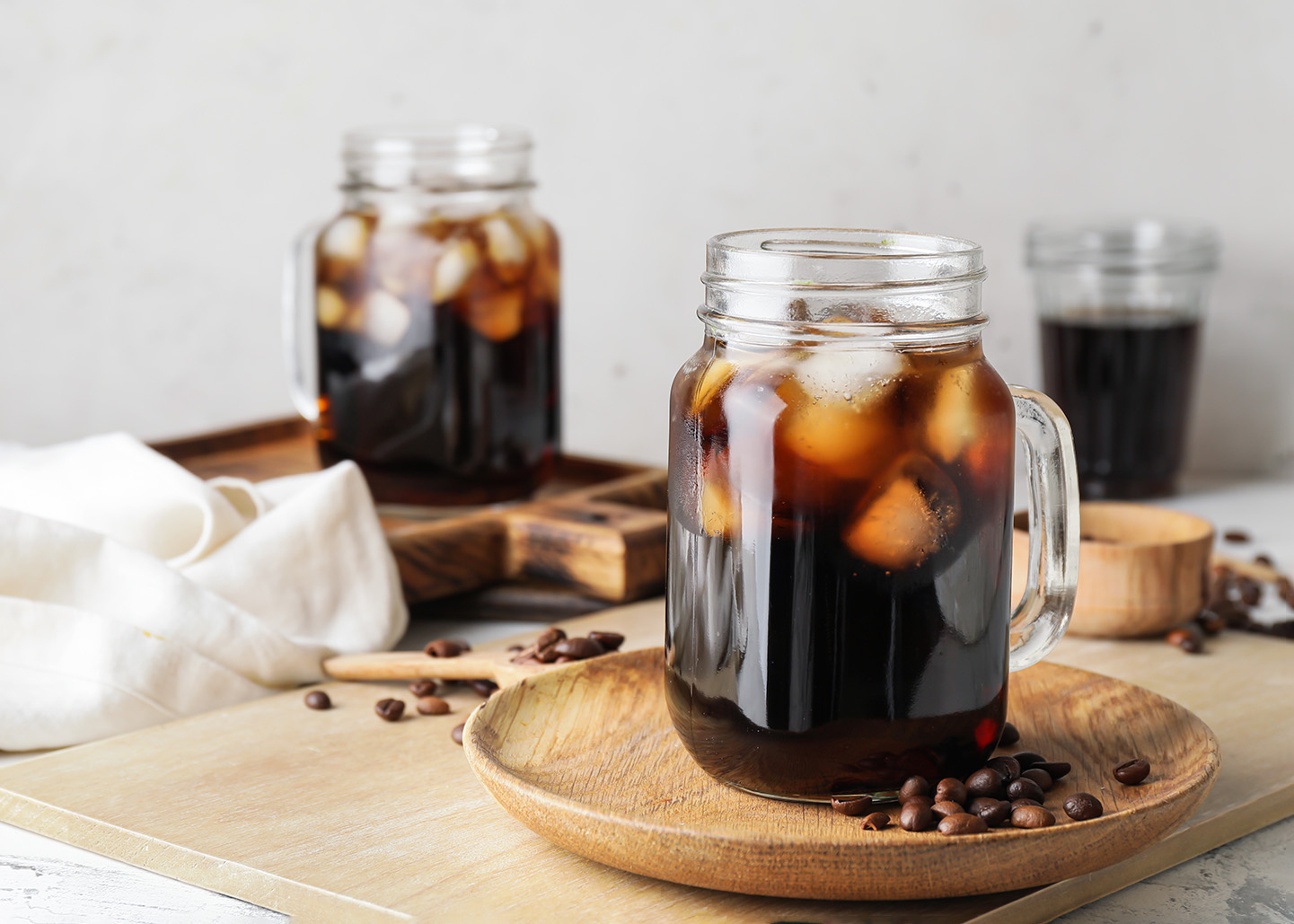
Here’s how it’s done:
- Get some freshly roasted high-quality coffee beans ready. Specialty coffee beans are ideal for cold brews, especially if these beans originate from Africa. The recommended ratio is 200 grams of coffee per 1 litre of water.
- Grind beans immediately before brewing: aim for a medium grind.
- Pour ground coffee into your French press and add half of the water. Use cold water that’s been boiled previously if possible.
- Stir, then add the rest of the water while you keep on stirring. Cold water and coffee take a while to mix together properly, so be patient and stir until both ingredients are decently combined.
- Put the plunger onto your French press, but don’t push it down yet. Place the coffee press in the fridge for around 12 hours.
- Once you’ve taken your French press out of the fridge, remove the lid, break the crust covering the top of your coffee and stir gently. Then slowly push down the plunger.
- To keep the flavours from over-developing, transfer the coffee into a different container. If you want to minimise the amount of sediment, try and pour the brew through a paper filter.
- Pour the drink into cups. Serve it as is, add some ice cubes or use as an ice cream topping.
- You can store the rest of your cold brew coffee in the fridge for around one week.
- Enjoy!
Your French Press Is Also a Milk Frother!
You’ve already learned how to brew some hot or cold coffee in your French press—but did you know that you can also use it as a replacement for a milk frother? Both regular cow’s milk and plant-based drinks will work fine here. If you prefer the latter, consider giving special plant-based barista milk a try: it’ll help you whip up some truly delicious AND vegan foam. How should you go about doing it then?
- Heat milk to a temperature of around 60–65 °C. Do not go above this limit: if you do, the proteins in the milk will start breaking down, causing the milk to lose some of its flavour. For maximum convenience and accuracy, use a special thermometer.
- Pour the milk into your French press.
- Move the plunger up and down quickly until you obtain the desired consistency.
- Pour the milk straight into cups—or, if you’re interested in trying your hand at latte art, transfer it into a special milk jug first, twirl it around gently to get rid of any bubbles, then pour.
For a Cup of Coffee or Tea
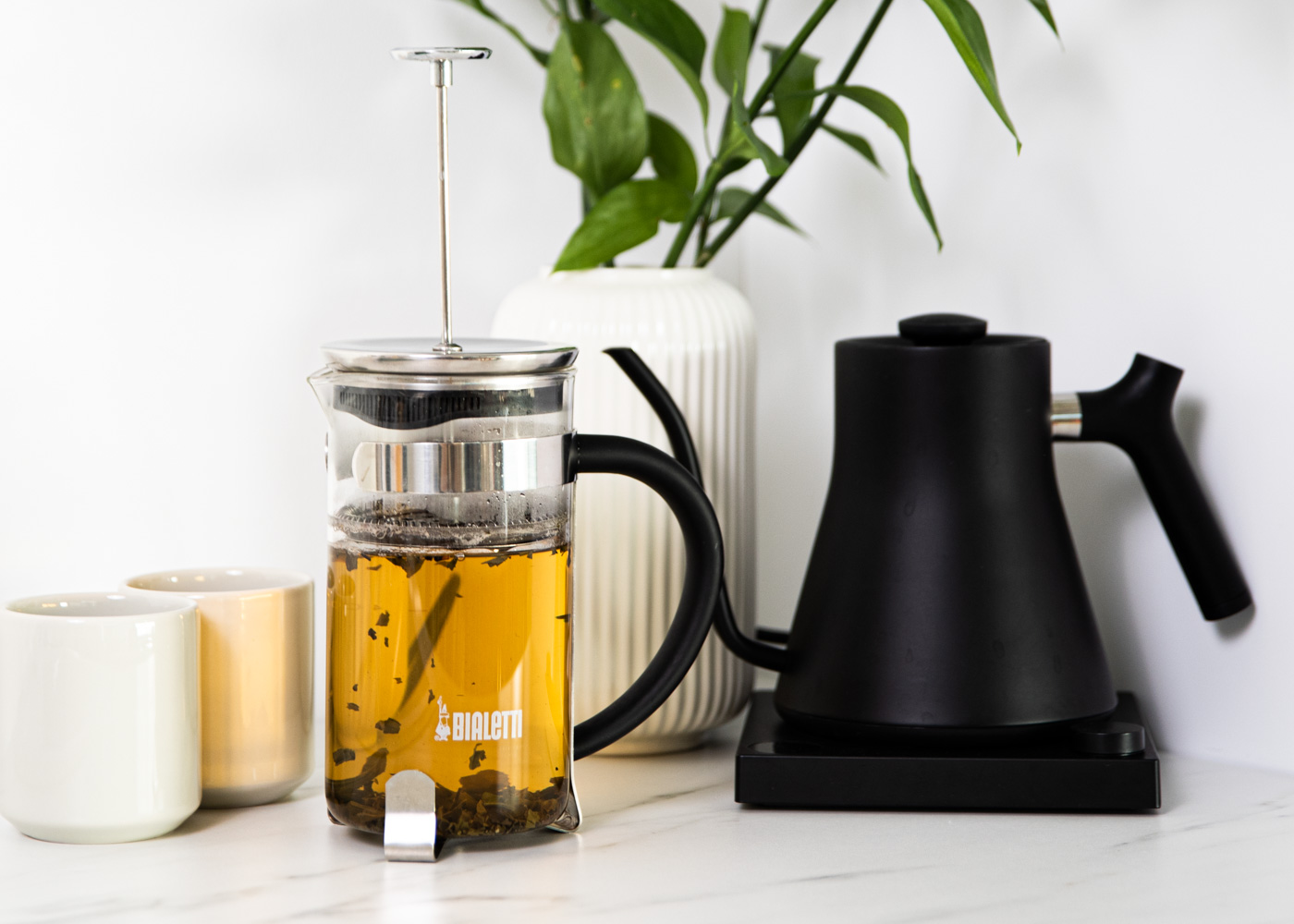
Even though French presses are primarily designed for coffee, they’re used as teapots in most households. The plunger works just as well when separating tea leaves from the liquid, allowing you to enjoy a delicious, leaf-free drink. Simply purchase some delicious loose-leaf tea, pour some into your French press, add water at the recommended temperature and infuse for the specified amount of time (you can learn more about tea here). Then push the plunger down and pour your tea into cups. Keep in mind though that pushing down the plunger doesn’t prevent the leaves from mixing with water, which means that your tea continues on infusing. That’s why it’s highly recommended to either pour all of the tea into cups at once or transfer it to a different pot.
To Conclude…
Hopefully, you’re now ready to give this trendy, universal brewing tool a try—or to rediscover your French press if you already own one. Now go engage in some bold brewing experiments before you sit back and enjoy delicious French press coffee!
